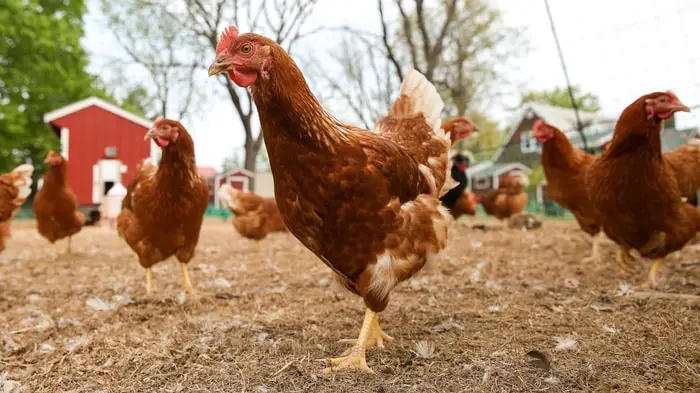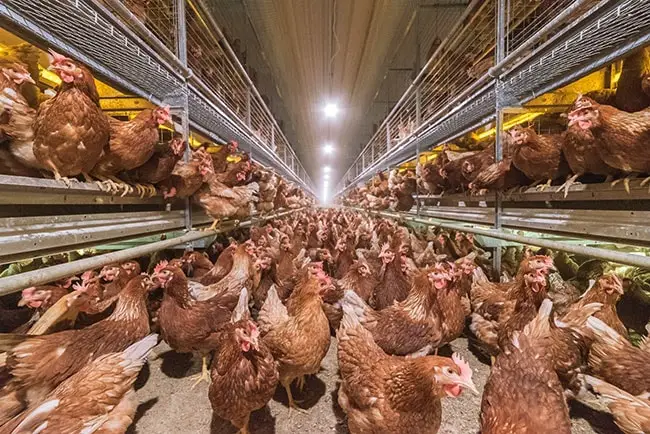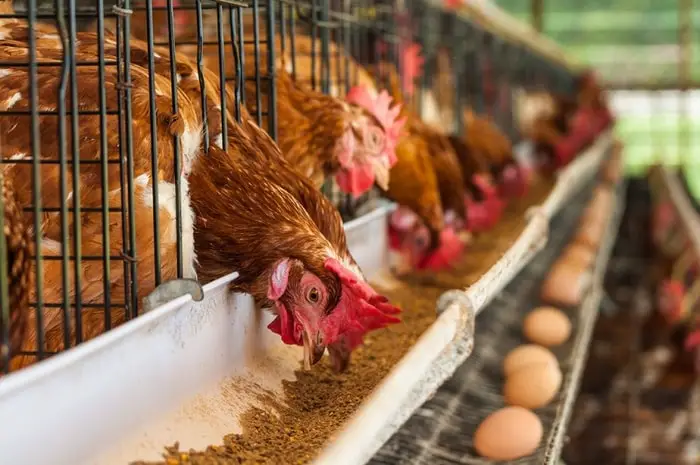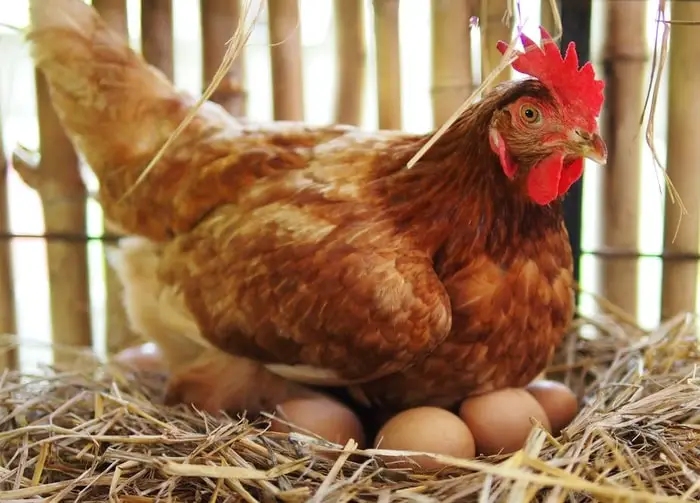Fowl pox is a common name for a mild to severe, acute, slow-developing viral disease of birds caused by Avipoxvirus. The disease is characterized by cutaneous lesions on the body’s unfeathered skin and fibrino-necrotic proliferative lesions in the mucous membrane of the respiratory and upper digestive. It commonly occurs in domestic fowls and occurs in turkeys, guinea fowls, quails, pigeons, pheasants, canaries, ducks, goose, and wild birds.
Important Information About Fowl Pox
Fowl pox is an ancient disease of poultry, and it was mistakenly thought to be related to smallpox and chickenpox of humans. The term ‘Fowlpox’ was initially used to describe all pox diseases of birds, but now it is often used to refer to chicken’s and turkeys’ disease.

Causes of Fowl Pox Disease
Fowlpox virus is a double-stranded DNA virus belonging to the genus Avipoxvirus of the family Poxviridae. There are five or six closely related organisms that primarily affect various bird species, but there is some cross-infection. Infection occurs through the respiratory route, skin abrasions or bites, and possibly through infective scabs’ ingestion.
Epidemiology of Fowl Pox
Fowlpox has a worldwide distribution. Although Avian Polymixo Virus (APV) infections have been reported to affect over 232 species in 23 orders of birds but most commonly reported in upland game birds, songbirds, marine birds, and the parrot family can become infected. All age groups except the recently hatched are susceptible to the Fowlpox virus. The virus is highly resistant to drying and may survive months to years in the dried scabs, and infection with Avian pox can occur throughout the year.
Transmission of Fowlpox Virus
The fowlpox disease is transmitted by direct contact with diseased chickens or carrier birds or through feed and water. Blood-sucking arthropods such as mosquitoes, ticks, and mites may transmit the virus from bird to bird and nearby flocks. Attendants and animals are also capable of spreading the infection from one place to another.

Pathogenesis of Fowlpox Virus
In chickens infected intradermally, the virus was first detected in the skin at the inoculation site on day two and in the lungs on day 4, followed by detectable viremia on day 5.
- The virus enters into the body mostly through insect biting or abrasions/ lacerations in the mouth region or through injuries on the comb, wattles, or skin.
- The virus shows tissue tropism to epithelial cells of the skin and mucous membranes and replicates in the cytoplasm of the infected cells.
- The virus causes proliferation of the epithelium with ballooning of the cells resulting in papules or vesicles.
- Some virus enters the blood, causing viremia, and there could be some viral replications in the liver and spleen leading to secondary viremia.
- Epithelial hyperplasia results in the development of water-like yellow-brown nodules, which coalesce to form a cauliflower-like mass.
- Secondary Staphylococcal infection may produce pus in pimples.
- Reddish-brown to black scabs are formed in the terminal stage.
What are the Symptoms of Fowlpox?
The fowlpox disease’s incubation period varies from 4 to 10 days in poultry and is about four days in canaries. The clinical sign of fowlpox varies due to the host’s susceptibility, the virus’s virulence, distribution of the lesions, and other complicating factors. Fowlpox occurs in 3 forms:
Cutaneous Form ( Dry form or skin form or contagious epithelioma):
- Typical pox lesions start as small white macules followed by blisters and ultimately forming a grayish-brown wartlike scab.
- Scabs dry after a few days and, if removed, leave a raw bleeding surface.
- Affected birds are more likely to recover if complication due to other infections does not arise.

Diphtheritic form:
- Small caseous white patches inside the trachea, pharynx, larynx, mouth, at the sides of the tongue, on the palate’s roof, and around the epiglottis.
- The lesions coalesce to form large cheesy necrotic nodules, which may prevent the birds from eating.
- Death may result from suffocation by occlusion of the larynx
- Mortality may reach up to 50%.
Ocular Form:
- There is a presence of lacrimation and conjunctivitis.
- Cheesy exudate accumulates under the eyelids.
Diagnosis of Fowlpox Disease
The diagnosis depends on the clinical signs, flock history, and gross lesions. Your veterinarians perform laboratory diagnosis. The diagnosis is based on:
- Isolation and identification of the virus from infected birds.
- Histopathology and serological detection by AGID, HA, and ELISA.
- Virus neutralization test.
- Immunodiffusion test.
- Passive haemagglutination test.
The disease may be confused with some respiratory disease like:
- Infectious bronchitis.
- Infectious laryngotracheitis.
- Newcastle disease.
- Infectious coryza.
- Mycoplasmosis.
Fowlpox Treatment
There is no known effective treatment for fowl pox in birds. If there is evidence of secondary bacterial infection, broad-spectrum antibiotics may be used for some benefits. Flocks and individuals still may be vaccinated, usually with chicken strain by wing web puncture. Treatment consists of removing skin lesions and utilizing sodium bicarbonate or Lugol’s solution of iodine rashes removing the diphtheritic membrane from the mouth and throat and swabbing the area Lugol’s solution of iodine. You may assist in recovery to spread the infection to other parts of the skin or other birds.

Prevention and Control of Fowlpox
If infected birds are present, you have to eliminate standing water to control the mosquitoes’ primary vector. Infected birds should be isolated or killed to remove the source of the virus. Feeders, waterers, birdbaths, and cages should be decontaminated with a 10% bleach solution. If infected birds are not present but endemic area, biosecurity and vaccinations are the methods of choice for Avian pox’s prevention and control.
- If authorized personnel looks after both the infected and non-infected flocks, they must visit the healthy flock first and then infected birds.
- The worker must change their clothing before entering different flocks.
- Workers should shower before re-entering the non-infected flocks.
- Ensure all opening is screened to prevent the entry of wild birds, if possible, you use a five mesh to prevent the entry of flying insects.
- Any vehicles on other farms that have been on other farms should be kept as far as possible from the barns.
- The wing-web vaccination method is used for chickens and the thigh-stick method for turkeys older than eight weeks.
- You can vaccinate the day-old chicks by using the wing-web method.
- All replacement chickens must be vaccinated against fowl pox when they are 6 to 10 weeks of age.
- One application of the FP vaccine results in permanent immunity.
Final Advice Fowl Pox
Fowlpox is a common infectious viral disease of poultry and other bird species. The disease is characterized by specific poxes like cutaneous lesions in the body’s featherless parts like beaks, wattles, legs, and footpads. The disease can be prevented by vaccination at designated age and improvement of hygiene and biosecurity. I think this article will help you a lot.